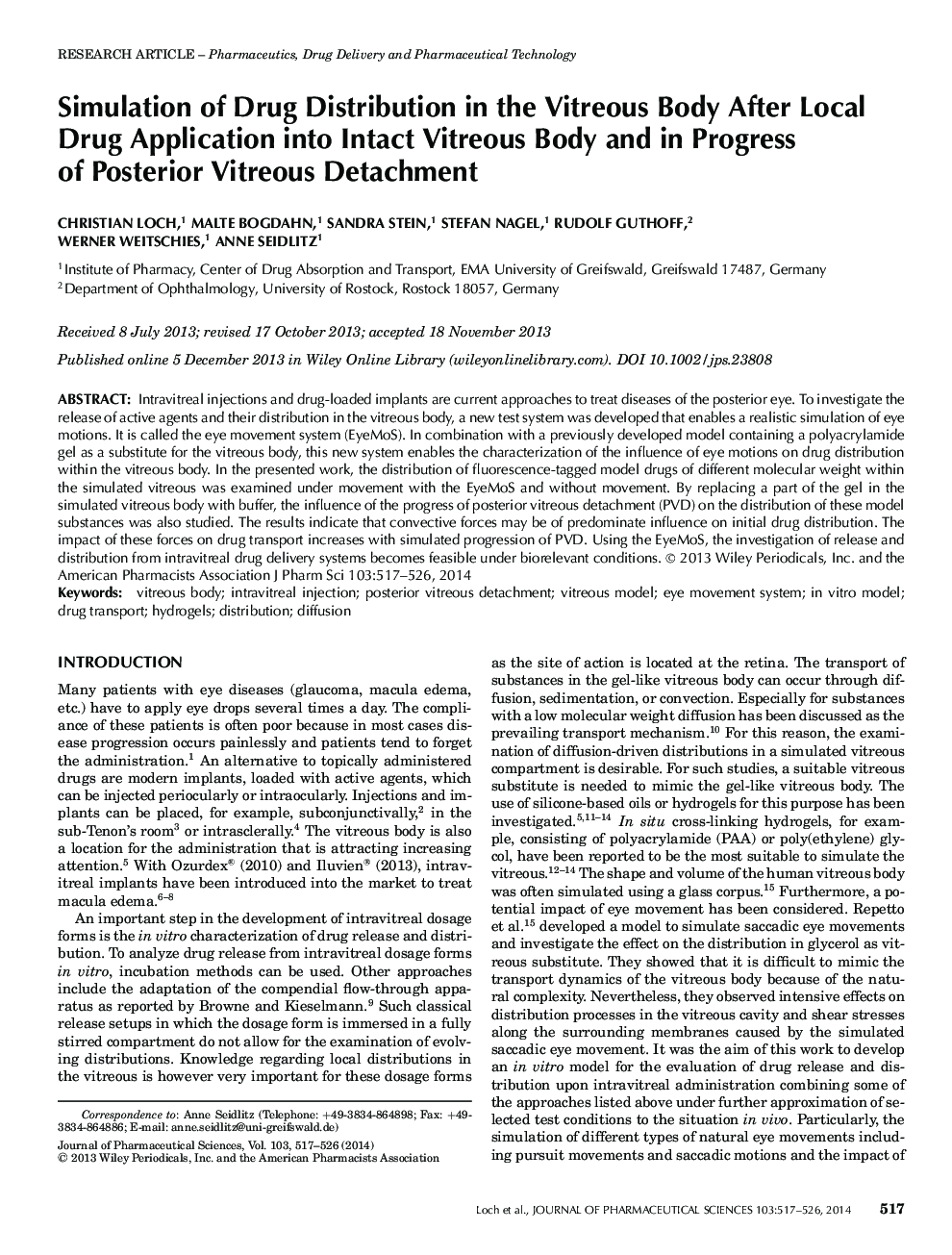| Article ID | Journal | Published Year | Pages | File Type |
|---|---|---|---|---|
| 10162598 | Journal of Pharmaceutical Sciences | 2014 | 10 Pages |
Abstract
Intravitreal injections and drug-loaded implants are current approaches to treat diseases of the posterior eye. To investigate the release of active agents and their distribution in the vitreous body, a new test system was developed that enables a realistic simulation of eye motions. It is called the eye movement system (EyeMoS). In combination with a previously developed model containing a polyacrylamide gel as a substitute for the vitreous body, this new system enables the characterization of the influence of eye motions on drug distribution within the vitreous body. In the presented work, the distribution of fluorescence-tagged model drugs of different molecular weight within the simulated vitreous was examined under movement with the EyeMoS and without movement. By replacing a part of the gel in the simulated vitreous body with buffer, the influence of the progress of posterior vitreous detachment (PVD) on the distribution of these model substances was also studied. The results indicate that convective forces may be of predominate influence on initial drug distribution. The impact of these forces on drug transport increases with simulated progression of PVD. Using the EyeMoS, the investigation of release and distribution from intravitreal drug delivery systems becomes feasible under biorelevant conditions. © 2013 Wiley Periodicals, Inc. and the American Pharmacists Association J Pharm Sci 103:517-526, 2014
Keywords
Related Topics
Health Sciences
Pharmacology, Toxicology and Pharmaceutical Science
Drug Discovery
Authors
Christian Loch, Malte Bogdahn, Sandra Stein, Stefan Nagel, Rudolf Guthoff, Werner Weitschies, Anne Seidlitz,
